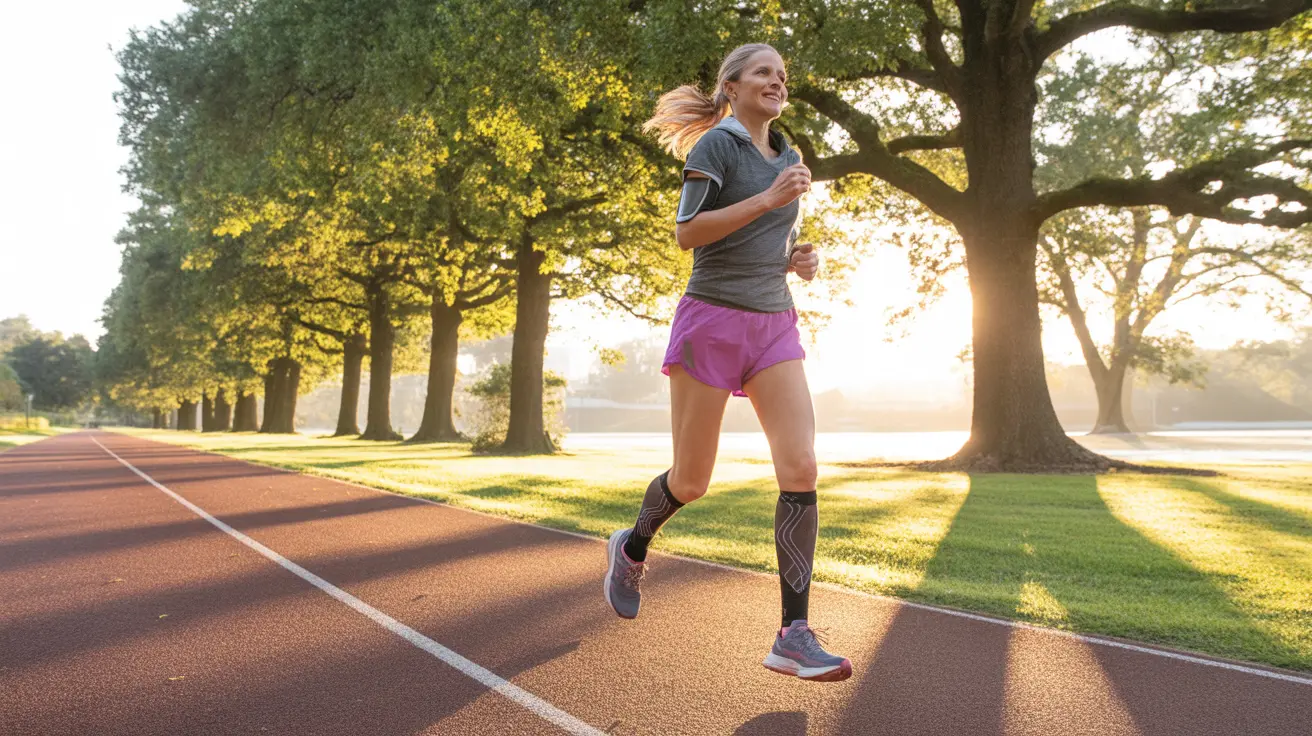For individuals with varicose veins, questions about maintaining an active lifestyle often center around running. While these visible, swollen blood vessels might cause concern, understanding how to run safely with varicose veins can help you continue enjoying this beneficial form of exercise while managing your vein health.
This comprehensive guide explores the relationship between running and varicose veins, offering practical advice for maintaining an active lifestyle without compromising vein health. We'll cover essential precautions, helpful gear, and important warning signs to watch for during exercise.
Understanding the Impact of Running on Varicose Veins
Running can actually provide several benefits for individuals with varicose veins when done correctly. The activity promotes better circulation, helps maintain a healthy weight, and strengthens leg muscles – all factors that can positively influence vein health. However, the impact forces and prolonged standing associated with running require careful consideration.
Benefits of Running for Vein Health
- Improve overall circulation
- Strengthen calf muscles, which help pump blood back to the heart
- Help maintain a healthy weight, reducing pressure on veins
- Enhance cardiovascular health
- Promote better blood flow throughout the legs
Essential Precautions for Running with Varicose Veins
Taking proper precautions can help make running both safe and enjoyable when you have varicose veins. The key lies in proper preparation and listening to your body's signals.
Compression Gear and Proper Footwear
Wearing appropriate compression socks or stockings while running provides crucial support for your veins. These specialized garments help:
- Improve blood circulation
- Reduce swelling during exercise
- Minimize discomfort and fatigue
- Provide additional support to affected areas
Choosing the Right Running Surface
The surface you run on can significantly impact the stress on your legs and veins. Opt for:
- Softer surfaces like rubber tracks or grass
- Well-maintained dirt trails
- Shock-absorbing surfaces
- Avoid hard concrete when possible
Managing Your Running Routine
Developing an appropriate running schedule is crucial for those with varicose veins. Start gradually and build up your distance and intensity over time. Incorporate regular breaks and pay attention to how your legs feel during and after exercise.
Warning Signs to Watch For
Be alert for signs that indicate you should modify or pause your running routine:
- Unusual pain or discomfort in affected areas
- Increased swelling during or after running
- Heaviness or fatigue in the legs
- Skin changes around varicose veins
- Persistent cramping
Frequently Asked Questions
Is it safe to run if I have varicose veins, and how can running affect my symptoms?
Yes, running can be safe with varicose veins when proper precautions are taken. Running may actually improve symptoms by promoting better circulation and strengthening leg muscles. However, it's important to start gradually and monitor how your body responds to the activity.
What precautions should I take when running with varicose veins to prevent discomfort or worsening vein issues?
Key precautions include wearing compression garments, choosing appropriate footwear, starting gradually, and maintaining proper form. It's also important to stay hydrated and avoid running during extremely hot weather when veins tend to dilate more.
Can wearing compression socks while running help manage varicose vein symptoms?
Yes, compression socks are highly beneficial when running with varicose veins. They help improve circulation, reduce swelling, and provide support to the affected veins. Choose medical-grade compression socks specifically designed for exercise.
What types of running surfaces are best for people with varicose veins to reduce leg vein strain?
Softer, more forgiving surfaces are best for running with varicose veins. Choose rubber tracks, grass, or well-maintained dirt trails over concrete or asphalt. These surfaces help reduce impact and minimize stress on your legs and veins.
When should I stop running and seek medical advice if my varicose veins cause pain or swelling?
Seek medical attention if you experience severe pain, significant swelling, skin changes, or persistent discomfort that doesn't improve with rest. Also consult a healthcare provider if you notice any changes in the appearance or texture of your varicose veins after running.




